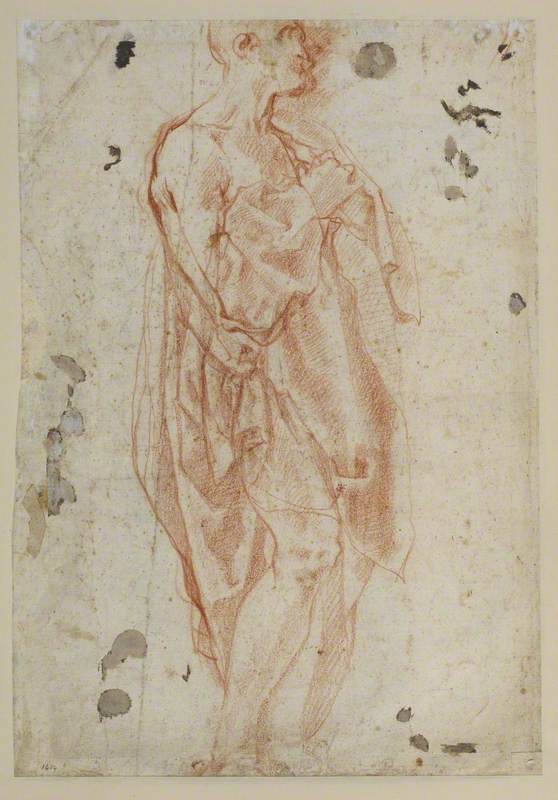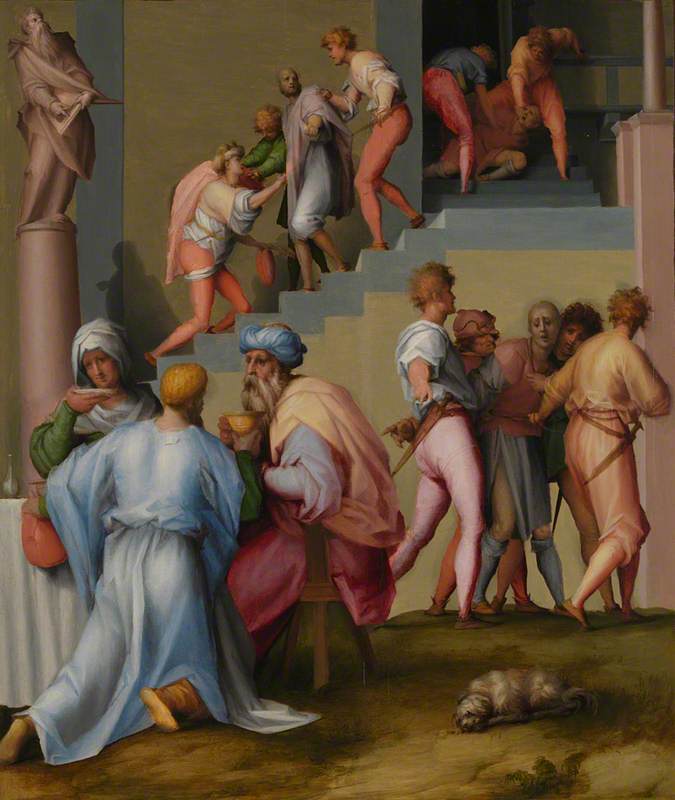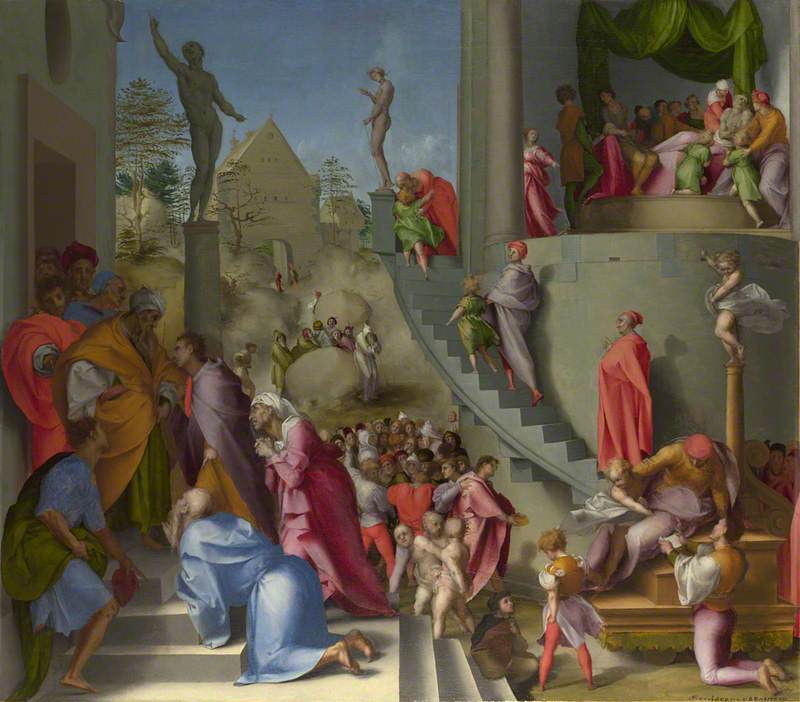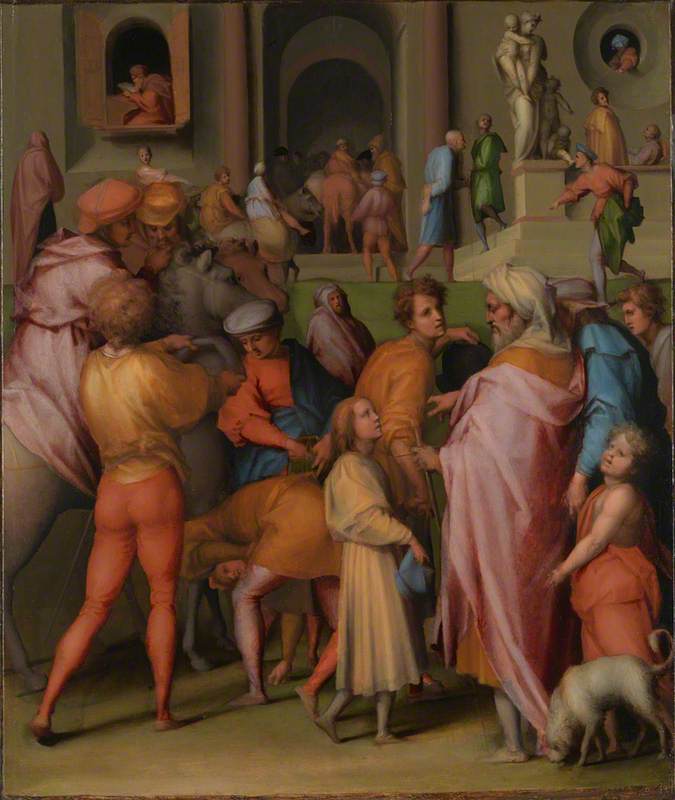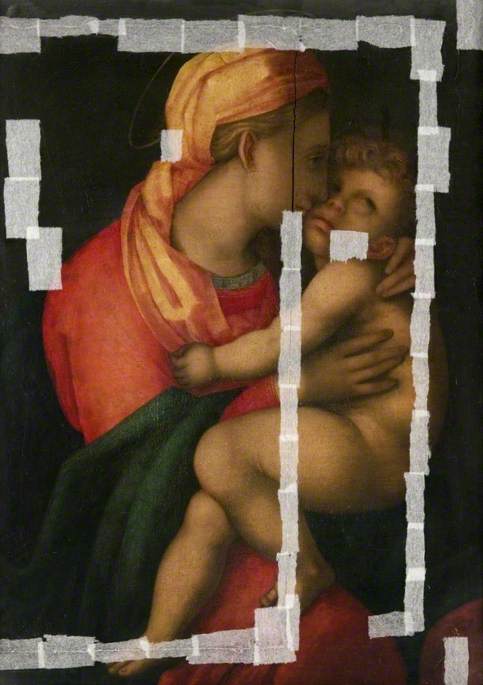(b Pontormo, nr. Empoli, 26 May 1494; d Florence, 31 Dec. 1556). Italian painter, active in and around Florence, where he was one of the outstanding artists of his generation. According to Vasari, he studied successively with Leonardo da Vinci, Albertinelli, Piero di Cosimo, and Andrea del Sarto, whose workshop he is said to have entered in 1512. Andrea was certainly a major influence on his early work. Pontormo was precocious (he was praised by Michelangelo whilst still a youth) and by the time he painted his Joseph in Egypt (NG, London) in about 1518 he had already created a distinctive style—full of restless movement and disconcertingly irrational effects of scale and space—that put him in the vanguard of Mannerism. The emotional tension evident in this work reaches its climax in Pontormo's masterpiece, the altarpiece of the Entombment (c.
Read more
1526–8) in the Capponi Chapel of S. Felicità, Florence, which is regarded as one of the summits of Mannerist art. It is sometimes described as the Deposition or the Lamentation, rather than the Entombment, and the uncertainty over the subject reflects its sublime otherworldliness: there is almost no conventional setting, the colours have an unearthly intensity, and the figures—lost in a trance of grief—seem to occupy a spiritual rather than a physical dimension. Pontormo was primarily a religious painter, but he was also an outstanding portraitist (he was a major influence on his pupil and adopted son Bronzino) and in 1520–1 for the Medici villa at Poggio a Caiano he painted a memorable mythological work (Vertumnus and Pomona according to Vasari, but the identification is disputed) in which an apparently idyllic scene reveals a strong undercurrent of neurosis. In his later work his style was enriched by the study of Michelangelo and Dürer's prints, but this stage of his career is known mainly through his superb drawings (best represented in the Uffizi), as the great fresco scheme in S. Lorenzo, Florence, that occupied him from 1546 until his death, was destroyed in the 18th century. In the last two years of his life he kept a diary—a remarkable document that not only gives a day-to-day account of his progress in S. Lorenzo but also reveals his obsession with his failing health, as he notes every ache and pain and records every morsel he ate. It is a poignant testimony of a melancholy and introspective man: Vasari described him as ‘temperate and polite’, but also ‘solitary beyond belief’.
Text source: The Oxford Dictionary of Art and Artists (Oxford University Press)
